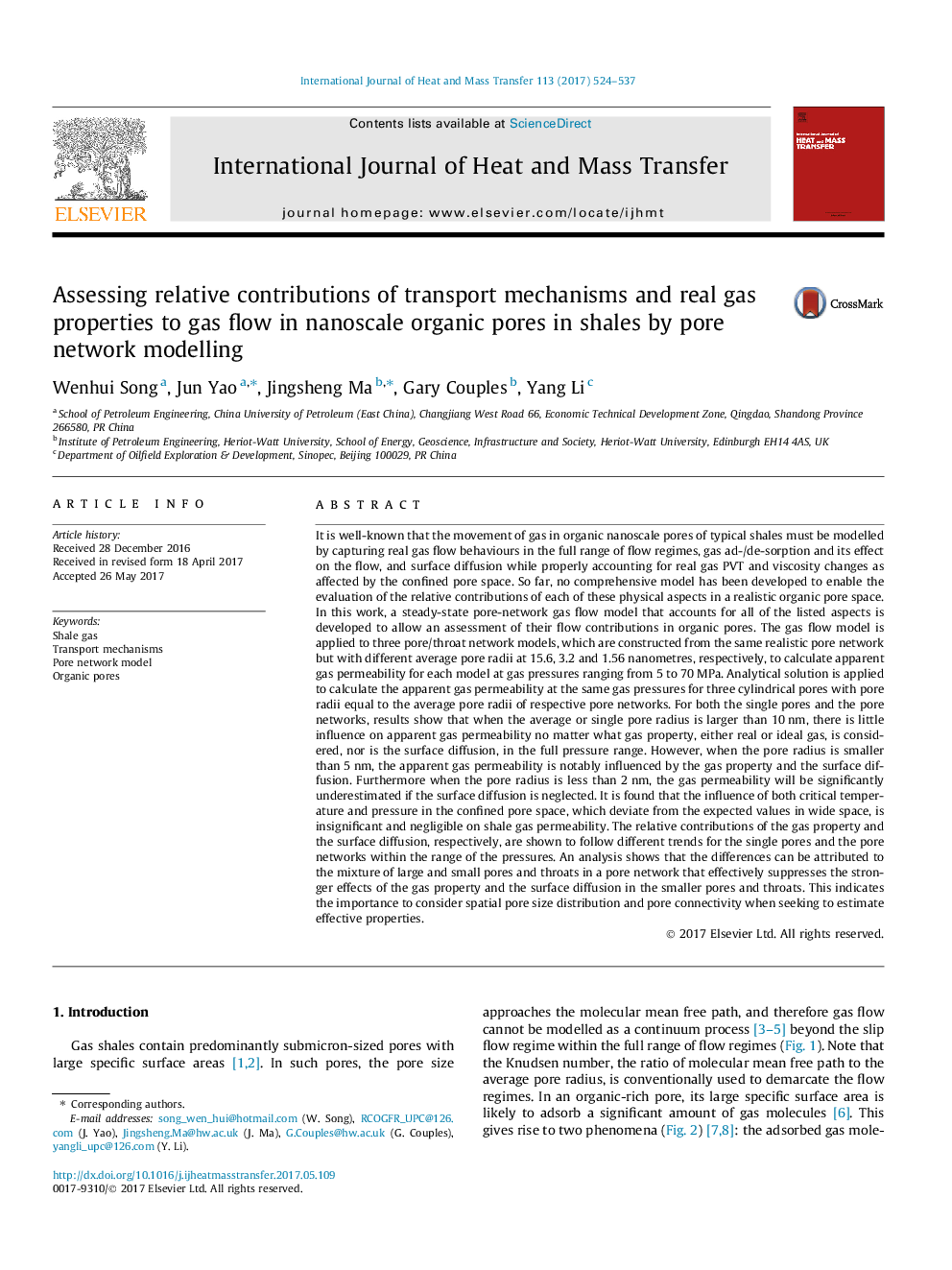| کد مقاله | کد نشریه | سال انتشار | مقاله انگلیسی | نسخه تمام متن |
|---|---|---|---|---|
| 4994196 | 1458028 | 2017 | 14 صفحه PDF | دانلود رایگان |
عنوان انگلیسی مقاله ISI
Assessing relative contributions of transport mechanisms and real gas properties to gas flow in nanoscale organic pores in shales by pore network modelling
ترجمه فارسی عنوان
ارزیابی مشارکت نسبی مکانیزم های حمل و نقل و خواص واقعی گاز به جریان گاز در منافذ های آلی نانومقیاس در شیلات با مدل سازی شبکه های توزیع
دانلود مقاله + سفارش ترجمه
دانلود مقاله ISI انگلیسی
رایگان برای ایرانیان
کلمات کلیدی
گاز شیل، مکانیسم های حمل و نقل، مدل شبکه پور منافذ ارگانیک،
موضوعات مرتبط
مهندسی و علوم پایه
مهندسی شیمی
جریان سیال و فرایندهای انتقال
چکیده انگلیسی
It is well-known that the movement of gas in organic nanoscale pores of typical shales must be modelled by capturing real gas flow behaviours in the full range of flow regimes, gas ad-/de-sorption and its effect on the flow, and surface diffusion while properly accounting for real gas PVT and viscosity changes as affected by the confined pore space. So far, no comprehensive model has been developed to enable the evaluation of the relative contributions of each of these physical aspects in a realistic organic pore space. In this work, a steady-state pore-network gas flow model that accounts for all of the listed aspects is developed to allow an assessment of their flow contributions in organic pores. The gas flow model is applied to three pore/throat network models, which are constructed from the same realistic pore network but with different average pore radii at 15.6, 3.2 and 1.56 nanometres, respectively, to calculate apparent gas permeability for each model at gas pressures ranging from 5 to 70Â MPa. Analytical solution is applied to calculate the apparent gas permeability at the same gas pressures for three cylindrical pores with pore radii equal to the average pore radii of respective pore networks. For both the single pores and the pore networks, results show that when the average or single pore radius is larger than 10Â nm, there is little influence on apparent gas permeability no matter what gas property, either real or ideal gas, is considered, nor is the surface diffusion, in the full pressure range. However, when the pore radius is smaller than 5Â nm, the apparent gas permeability is notably influenced by the gas property and the surface diffusion. Furthermore when the pore radius is less than 2Â nm, the gas permeability will be significantly underestimated if the surface diffusion is neglected. It is found that the influence of both critical temperature and pressure in the confined pore space, which deviate from the expected values in wide space, is insignificant and negligible on shale gas permeability. The relative contributions of the gas property and the surface diffusion, respectively, are shown to follow different trends for the single pores and the pore networks within the range of the pressures. An analysis shows that the differences can be attributed to the mixture of large and small pores and throats in a pore network that effectively suppresses the stronger effects of the gas property and the surface diffusion in the smaller pores and throats. This indicates the importance to consider spatial pore size distribution and pore connectivity when seeking to estimate effective properties.
ناشر
Database: Elsevier - ScienceDirect (ساینس دایرکت)
Journal: International Journal of Heat and Mass Transfer - Volume 113, October 2017, Pages 524-537
Journal: International Journal of Heat and Mass Transfer - Volume 113, October 2017, Pages 524-537
نویسندگان
Wenhui Song, Jun Yao, Jingsheng Ma, Gary Couples, Yang Li,
